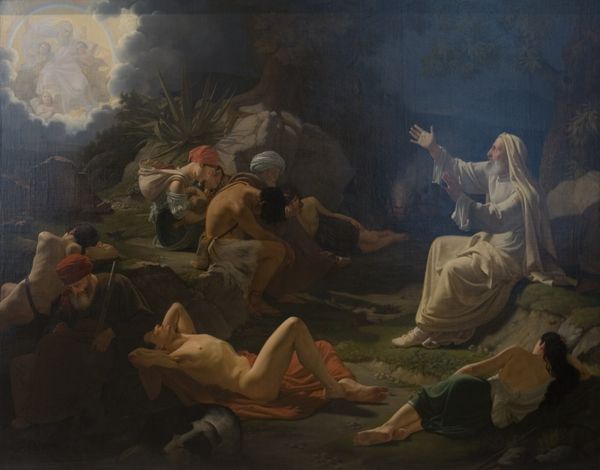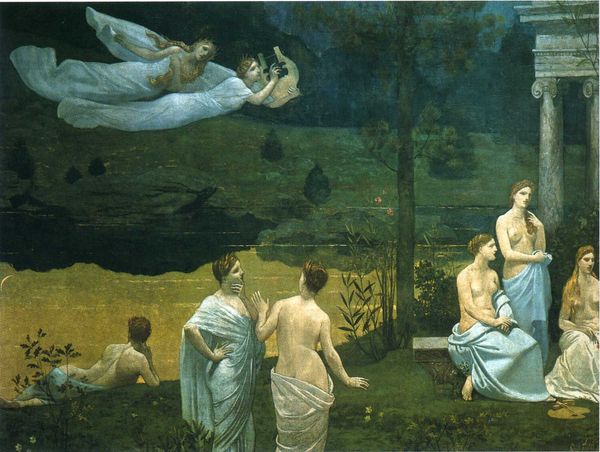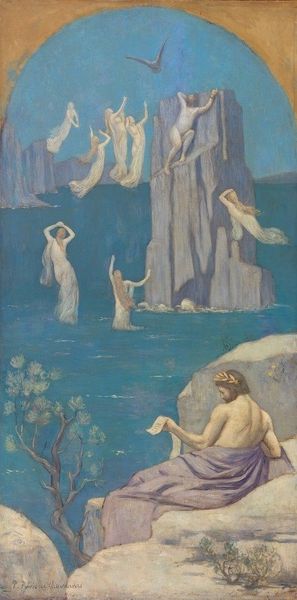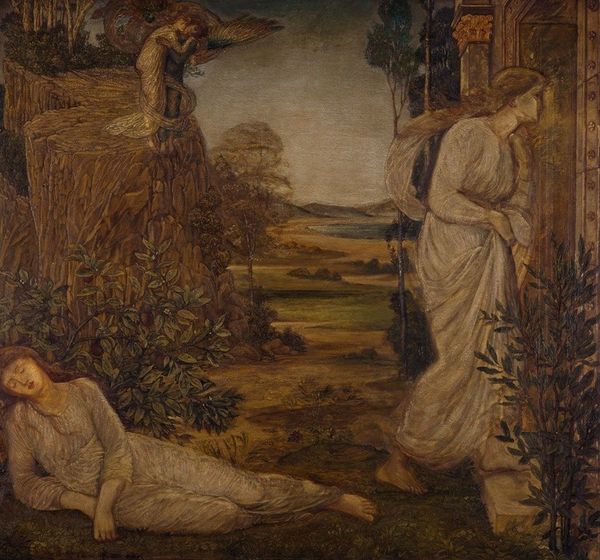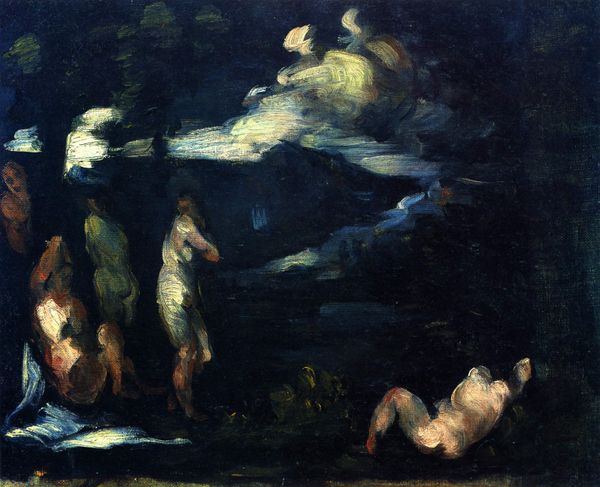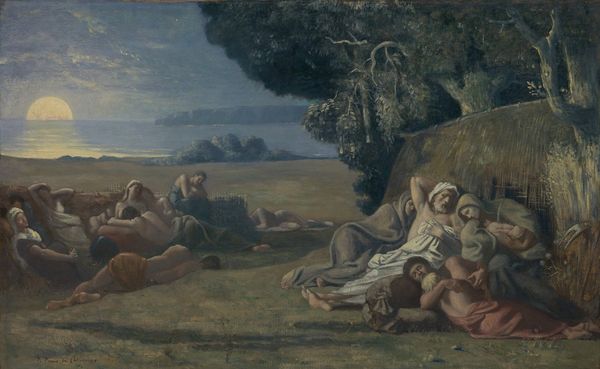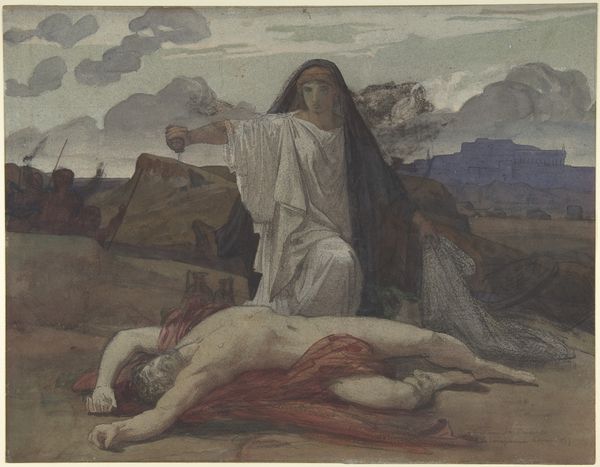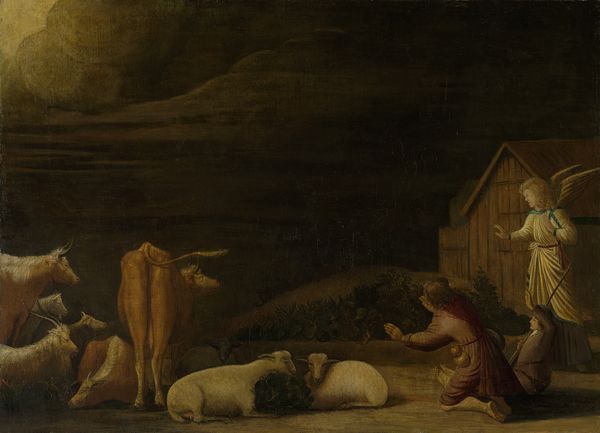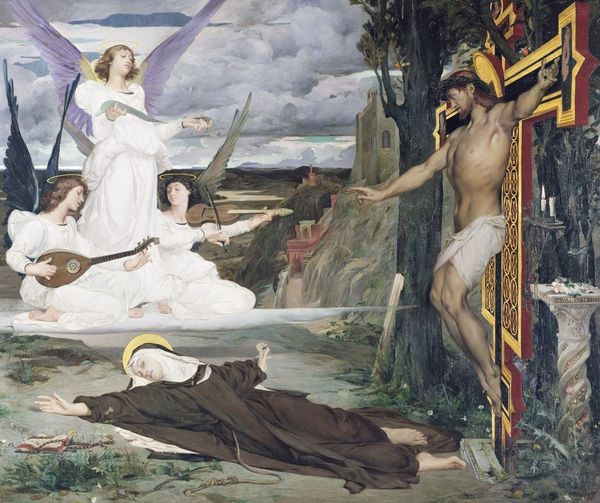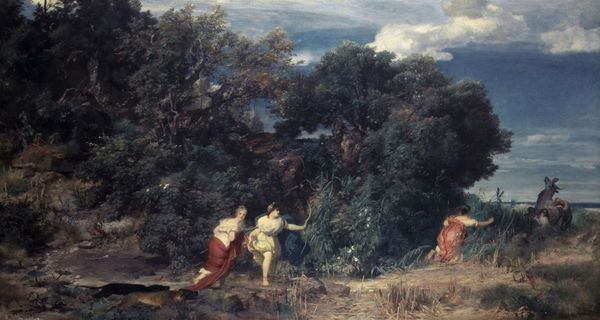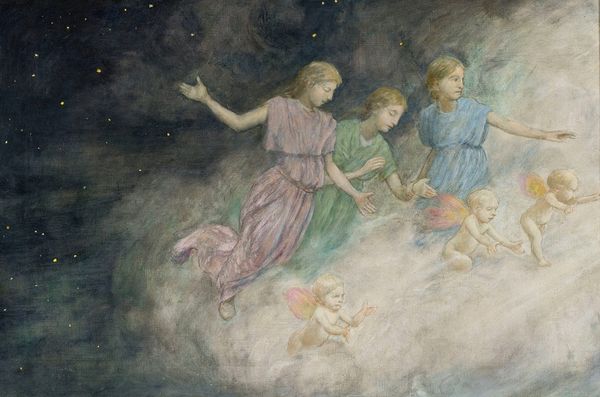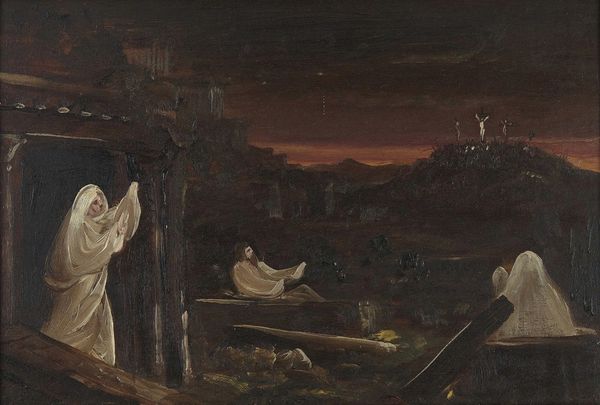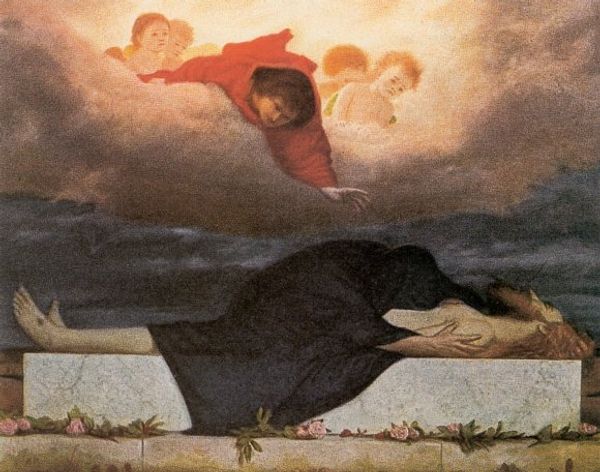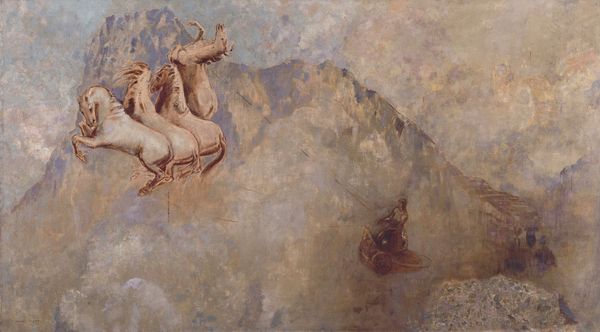
The Dream: "In his sleep he Saw Love, Glory and Wealth Appear to Him" 1883
0:00
0:00
Dimensions: 82 x 102 cm
Copyright: Public domain
Editor: So this is "The Dream: 'In his sleep he Saw Love, Glory and Wealth Appear to Him,'" created by Pierre Puvis de Chavannes in 1883 using oil paint. It strikes me as incredibly serene and dreamlike, but the figure on the ground seems burdened somehow. How do you interpret this work? Curator: From a formalist perspective, observe how the artist meticulously balances color and form. The muted palette of earth tones juxtaposed against the ethereal whites and creams of the figures creates a visual tension. Notice the compositional structure – the horizontal lines of the landscape contrasting with the diagonal flow of the floating figures, which divides the space between earthly suffering and imagined bliss. The material application, a deliberately flattened oil paint, is crucial here, and is divorced from Renaissance ideals of illusionism and depth, pushing the image forward into a direct encounter with the viewer. Do you see how these elements create the overall feeling of melancholic hope? Editor: I do. It’s almost like the artist is deliberately making it feel flat and staged, even while depicting a dream, to really bring forward the surface qualities. The dream figures also lack depth; is this common for Romantic painting? Curator: The lack of depth and the emphasis on surface aligns with Romantic ideals of subjectivity, yes, prioritizing emotional expression over realistic representation. The formal structure echoes Romantic paintings as well; notice the use of color planes, flattened perspective, and emphasis on line which work together to evoke the intangible. It’s an artwork about conveying emotions not just documenting appearances. What about that is striking to you? Editor: The interplay between the solid grounded figure, versus the airy dream figures seems particularly well composed for a balanced and satisfying painting. It’s interesting how the artist uses these basic formal elements to show us something about aspiration, or longing. Curator: Exactly. By attending to the internal structures, one appreciates de Chavannes' command of visual language and its capacity to resonate deeply with themes of mortality and dreams. Editor: I hadn't considered it that way. Now I see the purpose in his style that extends beyond technique. Curator: Indeed; through formalist analysis, we grasp how de Chavannes transformed conventional artistic language into profound personal expression.
Comments
No comments
Be the first to comment and join the conversation on the ultimate creative platform.
